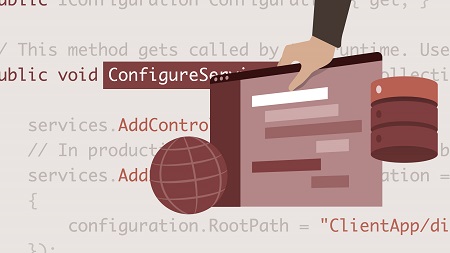
English | MP4 | AVC 1280×720 | AAC 48KHz 2ch | 2h 56m | 508 MB
Want to build your own web application? In this course, Ervis Trupja shows you how, explaining what it takes to create a web app using Angular, the popular JavaScript framework, for the front end and the ASP.NET Web API for the back end. Ervis steps through how to build the service layer with the ASP.NET Web API to expose the required endpoints to create, read, update, and delete entries. He then shows how to build a UI using Angular with Bootstrap; implement NgRx—a framework for building reactive applications in Angular—in your app; and handle different user authentication cases with Auth0.
Topics include:
- Creating, reading, updating, and deleting API endpoints
- Testing API endpoints using Postman
- Key Angular concepts
- Reading data from Angular
- Updating existing data from Angular
- Handling errors
- Implementing NgRx in an existing Angular app
- Authenticating users with Auth0
Table of Contents
1 Getting started with Angular
2 What you should know already
3 Demo application overview
4 NET Core templates
5 Web API architectural overview
6 Angular architectural overview
7 Creating data models
8 Adding a service and data
9 Create API endpoint
10 Read API endpoint
11 Update API endpoint
12 Delete API endpoint
13 Testing API endpoints using Postman
14 Angular key concepts
15 Generating components and services
16 Cleaning up code and updating the router
17 Designing the Books page
18 Reading data from Angular
19 Designing the Create page
20 Adding new data from Angular
21 Designing the Book Details page
22 Getting a single book from Angular
23 Updating existing data from Angular
24 Deleting data from Angular
25 Handling errors in Angular
26 Why NgRx
27 NgRx actions
28 NgRx store
29 NgRx reducers
30 Connecting the dots
31 Challenge Delete a book
32 Solution Delete a book
33 Setting up Auth0
34 Setting up an authentication service
35 Handling authentication
36 AuthGuard
37 Where to go next
Resolve the captcha to access the links!